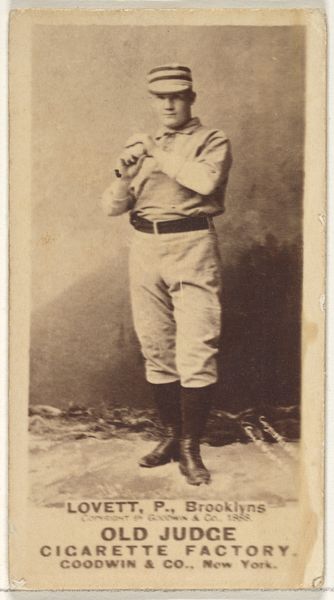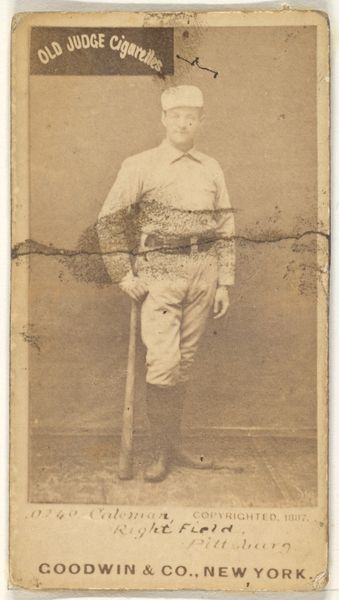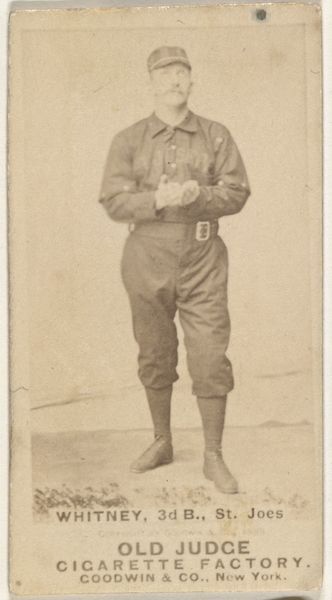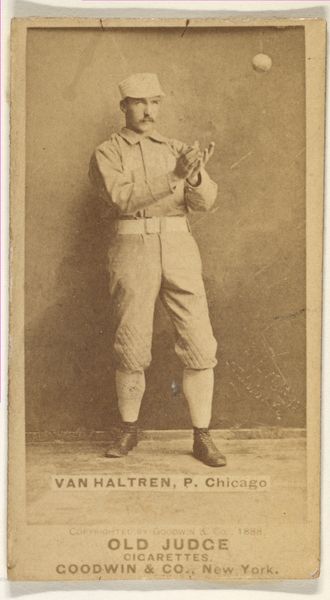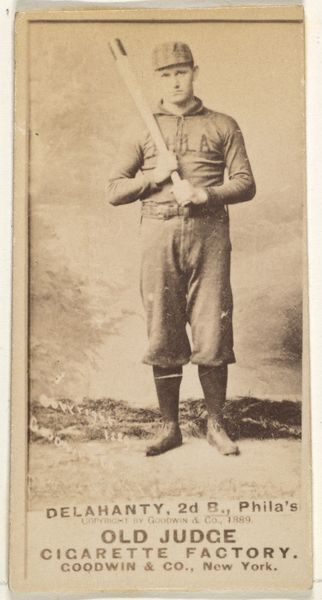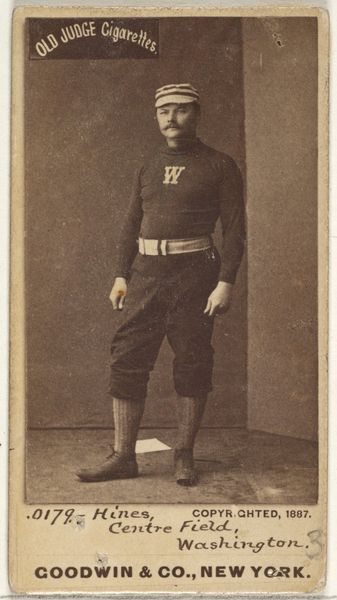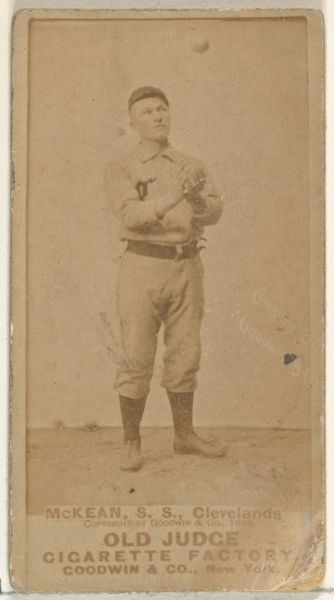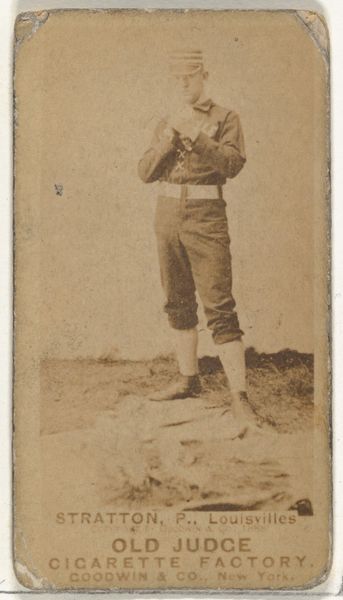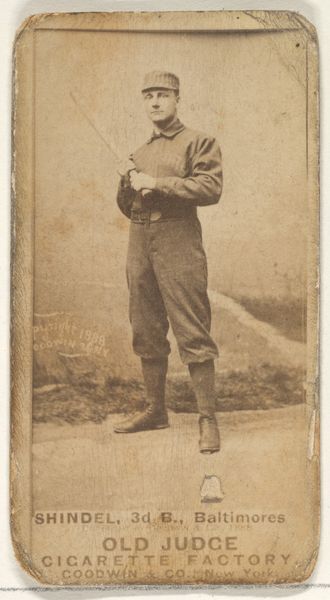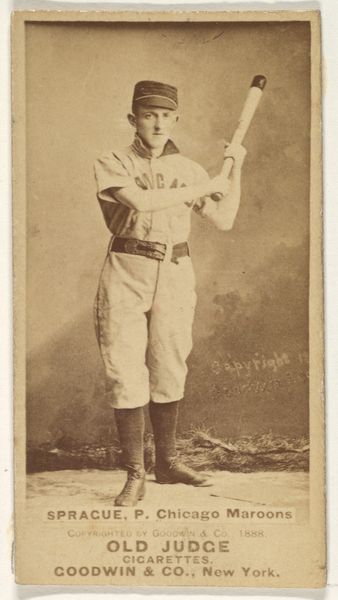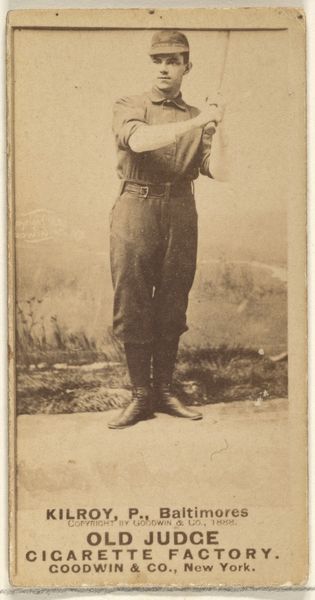
Charles James "Charlie" Parsons, Pitcher, Minneapolis, from the Old Judge series (N172) for Old Judge Cigarettes 1888
0:00
0:00
drawing, print, photography
#
portrait
#
drawing
# print
#
impressionism
#
baseball
#
photography
#
men
#
genre-painting
#
athlete
#
realism
Dimensions: sheet: 2 11/16 x 1 3/8 in. (6.9 x 3.5 cm)
Copyright: Public Domain
Curator: This is a photograph of Charles James "Charlie" Parsons, a baseball pitcher for Minneapolis. It’s part of the "Old Judge" series, created in 1888 by Goodwin & Company to promote Old Judge Cigarettes. These were essentially trading cards tucked into cigarette packs. Editor: Right off the bat, no pun intended, he has a certain weary grace, doesn't he? There’s a formality, yet he looks like he’s seen a few late innings. I feel I almost know him. Curator: Absolutely. The image itself exists within a nexus of early commercialism, sports culture, and evolving ideas around celebrity. We have to understand the deeply embedded gender dynamics and the class implications that accompany this idealization of the male athlete. Editor: Well said, so official! To me it whispers of simpler times. Okay, it was still deeply unfair and biased, but from an aesthetic perspective, this sepia tone is really something. Reminds me of an old photo album my grandmother had, faces yellowed with secrets. Curator: Exactly. The sepia tone links directly to specific photographic processes prevalent at the time. But we also have to acknowledge the exploitative nature of associating these athletes with a harmful product, reinforcing addictive behaviors and masking potential health consequences. Editor: I hear you. There’s a discomfort knowing this image was essentially selling poison. On a lighter note, imagine collecting these! I can just envision arguments on some sandlot baseball diamond over who gets which card, who trades whom for the star players... Curator: Which speaks to the rise of baseball, then becoming the ‘national pastime’ at the time. The strategic capitalization on athletes’ images shaped celebrity culture, while concurrently solidifying harmful, classist consumption habits. Editor: Looking at his uniform, it appears so simple compared to today's gaudy jerseys. And the bat just leaning there... It all feels very human and…well…American. A bit nostalgic, I admit. Even with the underlying commercial and social issues you’ve outlined. Curator: And within that nostalgia, there lies a carefully constructed narrative. Looking through that lens enables us to more profoundly grasp how representations—specifically in marketing—create lasting cultural resonance. Editor: Indeed. This little card, now an artifact, truly carries far more significance than any long-forgotten cigarette brand or ballgame statistic, doesn’t it? Curator: It urges us to constantly reassess both past and present assumptions of cultural consumption and celebrity idolization.
Comments
No comments
Be the first to comment and join the conversation on the ultimate creative platform.
